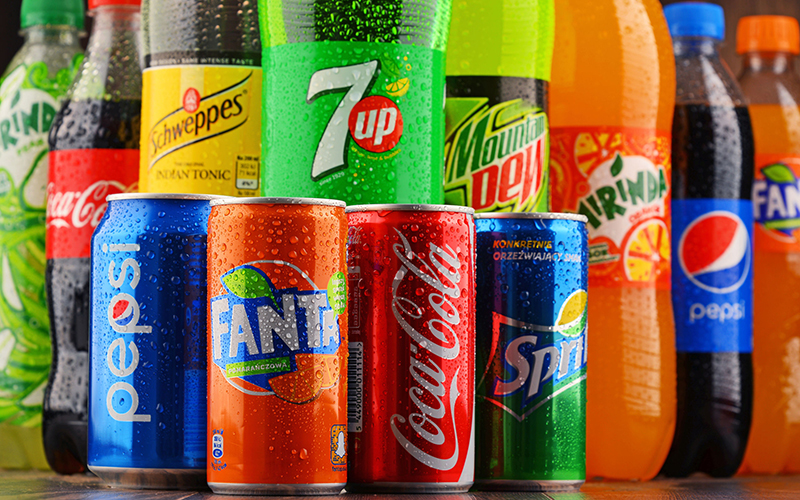
Soda, Sports Drinks and Teeth

Every time you step into a mini-mart, you’re faced with a host of options to squelch your thirst. A rainbow of colors in plastic bottles compete for your attention, and creative marketing often transforms sugared water into a fountain of youth. When it comes to your teeth, does it matter what you choose? How does a bottle of cola or a sports drink affect your teeth and general health?
Everybody knows most of these drinks include a lot of sugar, but it’s easy to overlook how much they carry. A little quick math can help you visualize the carbohydrate burst that occurs with the first sip. The nutritional label reports the number of grams of sugar in a serving, and there are 4 grams of sugar in a teaspoon. If a bottle shows 20 grams in a single serving, picture it as 5 teaspoons.

While a 12-ounce soda used to be the norm, 20-ounce bottles are now considered standard. But many of the labels show the grams of sugar for an 8-ounce serving, and they frequently report 2.5 servings in a bottle! Calculating the numbers on a typical label indicates you’ll consume over 19 teaspoons of sugar in this soft drink. Take a look at this one:
The bacteria that cause cavities use sugar for energy and produce acidic waste that erodes tooth enamel. Syrupy drinks provide an ideal power source to keep this population thriving while instigating an insulin spike in the bloodstream. The colossal sugar load also drives the liver to convert sugar into fat. Chronically elevated insulin creates insulin resistance, a condition that contributes to a range of diseases. From cavities to cancer, sugared drinks help fuel many of the health problems afflicting people today.
An Acid Problem
Sugar forms a vital part of the formula that produces tooth decay, but it’s the acid that ultimately causes enamel to dissolve. The normal pH of your mouth rests around 7, but tooth structure begins to erode when the acidity drops to 5.5. Soda can send the pH of the mouth into a nosedive, making the mouth 1000 times more acidic than needed to start damaging teeth. A review of many ingredient labels shows citric, phosphoric, and carbonic acids in the mix. It may take 15 minutes for the mouth’s pH to return to normal after the last sip, and that means a steady diet of sugary drinks can alter the mouth for hours each day.
Diet sodas often hover around a pH of 3.2, far into the range that damages teeth. It’s a good thing that sugar is missing, but a steady exposure to high acidity can still lead to a weakening of tooth enamel. Artificial sweeteners may have long-term general health effects that we’re yet to understand fully.

Limit The Damage
The best strategy for the sake of your teeth and overall health is to enjoy fresh water on a regular basis. If you’re going to drink soda, consider the following tips:
- Drink soda or sports drinks through a straw to minimize your teeth’s exposure.
- Rinse with water right after drinking one of these beverages.
- Avoid brushing your teeth for 30 minutes after drinking the beverage. This practice allows your mouth to return to normal pH before the teeth undergo the light abrasion of brushing.
- Avoid drinks that list acids on the ingredient label.
If you consume a sports drink during strenuous exercise or enjoy an occasional soda with a meal, there’s not a lot of reason to worry. Commit to keep sugar exposure to a minimum and drink more fresh water: Your teeth and your body will thank you!
Location
Fibonacci Smile
1 Fifth Street, Suite 100
Wenatchee, WA 98801
